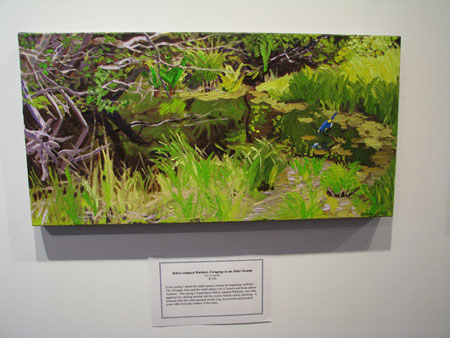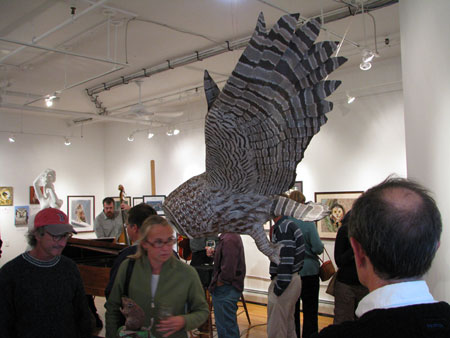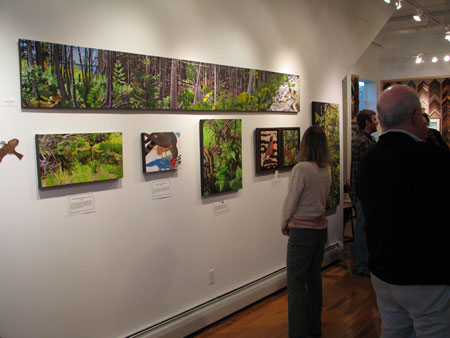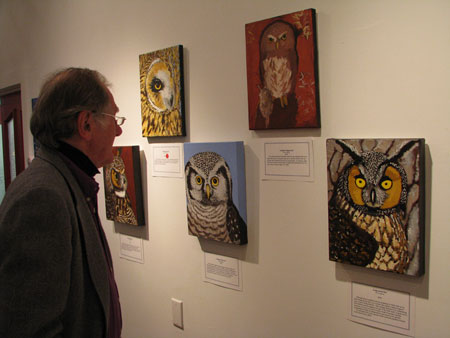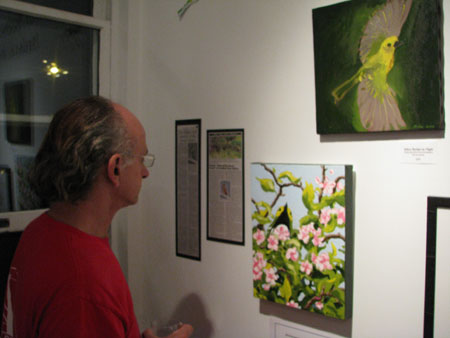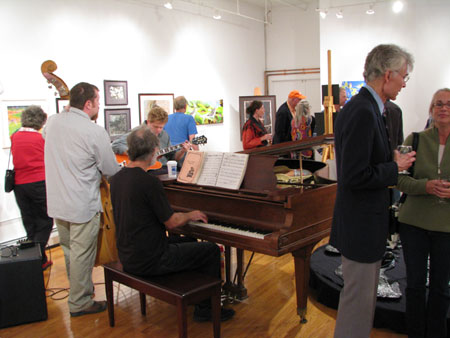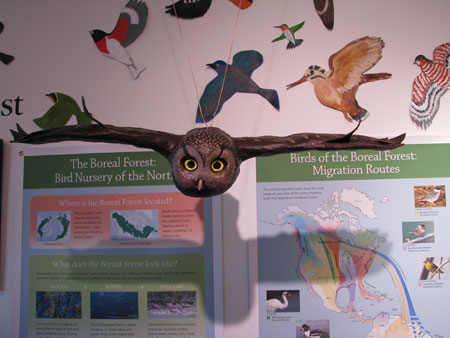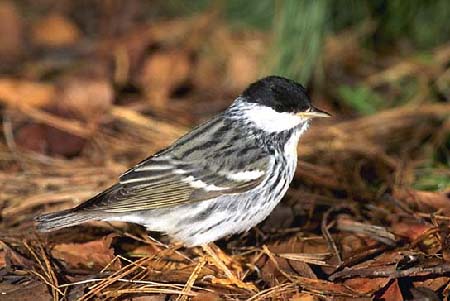
Credit: Kevin T. Karlson
I noticed a funny thing yesterday here in Gardiner, Maine. I pay some attention to bird migration within the confines of my work and family commitments. I even run an automated nocturnal migration audio monitoring station at my house though I often don't have time to sift through the results to see what went over until much later. When I walk my son to school in the morning I can hear the "tseeps" and "zips" of warblers overhead that are looking for places to spend the day after a long night of migration. The last week I had been hearing more and more of the sweet flight calls and dry "chup" notes of the first major push of Yellow-rumped Warblers. These calls were interspersed with the buzzy "zip" notes typical of Blackpoll Warblers and six or so other warbler species.
But yesterday suddenly the air was full of the Blackpoll type notes and I didn't hear a single Yellow-rump. I don't know why or if it really means something but it was a striking change. With all these birds moving around high above in the sky where it is difficult to see them, I was pleased when a few landed in the trees in our backyard and even more pleased when I got to study them through the binoculars and discover that they were indeed Blackpoll Warblers.
There was an 80% chance that the little Blackpoll Warbler catching insects in the maple in my backyard had been born and raised in the Boreal. That's because 80% of the world's Blackpoll Warblers nest in the Boreal, their range extending from Alaska to Newfoundland. Watching a bird hardly larger than your thumb that may have just made its way here from places as far away as Alaska, Yukon, or the Northwest Territories is like getting to see Michael Phelps winning his eight gold medals except without the hoopla. And for this small bird, the hard part was still ahead. Perhaps within the next few days after finding a good food source that allowed it to fatten up, this little bird would fly up into the darkening sky and set off over the trackless ocean towards Africa. The lights and sounds of land would disappear over the next hour until it would see no lights below and only the sound of wind and thrashing sea drifting up in the dark. When morning came that bird would see no land in all directions, only ocean. It would keep beating its wings over and over without stopping throughout that day, the next night, and several more. I imagine that at that point the bird must become almost trance-like in its focus like ultra-marathoners speak of when they describe the division between mind and body that comes after running for 24 or 48 hours. As time passes on and exhaustion comes closer and closer, the bird may notice the air warming and becoming more humid and, with luck, a steady wind that blows westward. Without those prevailing winds sweeping across from Africa, the bird and its brethren might not ever make it to their winter home. I don't know what birds feel but I can't imagine anything but intense relief when across the western horizon the first sliver of coastline appears—the South American continent! Can you imagine that little bird in my backyard descending next week down into a Venezuelan village to the sounds of people awakening and roosters crowing? The energy and spirit that can make a journey like that possible at all is pretty mind-blowing let alone imagining the birds that make the trek year after year.
Last week I experienced another example of hard-to-fathom energy, spirit, commitment and determination. Two years ago artist Susan Beebe came to a talk I gave about my involvement in the search for the Ivory-billed Woodpecker and the lessons learned from the fate of that species that could be applied to our work in protecting the Boreal. She left that event with a desire to do something to help and a plan that few of us would have had the vision and courage to take on.
Susan Beebe decided to make a quest to depict all 300 of the regularly occurring Boreal birds in various artistic mediums. Now I am not an artist but I know that a serious attempt at such a goal is not a sprint but a journey and a potentially long one. Susan is an ultramarathon artist. Two years into her vision she had depicted 50+ species of birds in dozens of pieces ranging from five-foot high paintings to flying sculptures to dramatic floor installations depicting the fate of waterfowl caught in the Alberta tar sands tailings ponds. Some artists might have taken the easy way out of the pledge to depict so many species and just made their own version of a field guide. Not Susan. Her pieces take you on a journey from the peaceful spring scene of "Yellow-rump Warblers Foraging in an Alder Swamp" to the celebration of color and pattern of "Spring Warblers" the startling sculpture of a Great Gray Owl about to catch its prey to the provocative and dark "Tar Sands" paintings and installments. The variety of ways she has brought together the images of birds within different contexts and different points of view is amazing and helps convey the multi-layered connections that we all have with the future of the Boreal and the birds that we love.
The first public display of Susan's creations took place at an opening event at the Jonathon Frost Gallery in Rockland, Maine where the works will remain on display until November. The opening was in itself a wonderful event with a packed house throughout the night, music, wine and cheese and fascinating conversations about Boreal conservation, birds, and art all mixed together. I took some video of the event to give you a flavor of what it was like and to see some of Susan's pieces in context. If you are anywhere nearby and have the chance to see them yourself, you should!
Here's a video of the gallery. You can find more on YouTube by clicking here.
Here are some pictures below. You can open a larger version if you click on them:|


